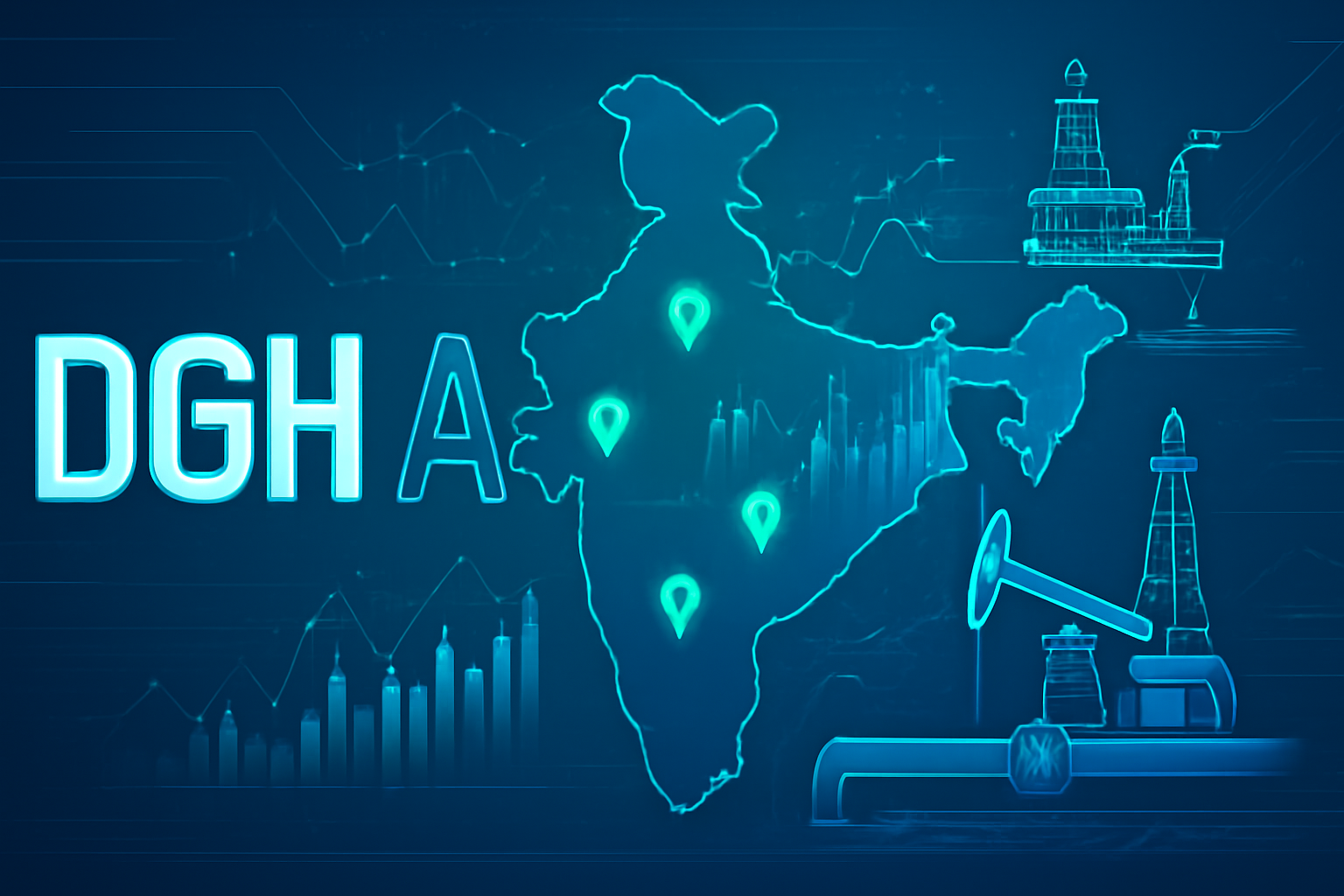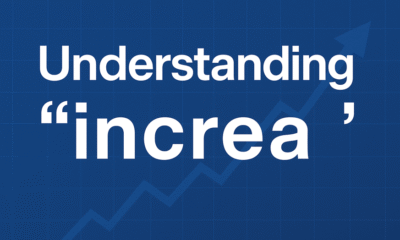World News
Understanding DGH A: The Heart of India’s Hydrocarbon Management and Its Role in Securing Energy Future
Published
4 months agoon
By
Admin
India’s energy sector is undergoing significant transformation, marked by a strategic drive to become more self-reliant in energy production. At the center of these efforts is the Directorate General of Hydrocarbons (DGH A), an essential body that oversees the exploration, production, and regulation of hydrocarbons in the country. This article delves into the role of DGH A, its impact on India’s energy security, its technological advancements, and its vision for the future of energy.
What Is DGH A?
The Directorate General of Hydrocarbons (DGH) is a technical and regulatory authority under India’s Ministry of Petroleum and Natural Gas. Established in 1993, its primary purpose is to regulate and supervise the exploration and production of oil and natural gas resources in India. The “A” in DGH A can sometimes be used interchangeably to indicate its administrative role in overseeing these critical national resources.
DGH A manages critical areas such as exploration, licensing, monitoring, and ensuring compliance with laws and regulations. Its functions make it a cornerstone of India’s hydrocarbon sector, which continues to play a vital role in the country’s energy security.
Key Roles and Responsibilities of DGH A
DGH A is tasked with overseeing all aspects of India’s hydrocarbon industry, focusing on both upstream and midstream activities. Here’s a breakdown of its key responsibilities:
1. Exploration and Production Monitoring
One of the critical functions of DGH A is the monitoring of exploration and production activities. It ensures that all companies—both state-owned and private—follow the required operational standards. The DGH reviews seismic and geological data, assesses the potential for new discoveries, and ensures optimal utilization of the country’s resources.
2. Policy Formulation and Regulatory Oversight
DGH A plays a significant role in formulating policies for the hydrocarbon sector. These policies guide the efficient extraction and utilization of natural resources while ensuring sustainability. It works in close coordination with other governmental bodies to streamline and modernize the regulatory environment for the sector.
An example is the Hydrocarbon Exploration and Licensing Policy (HELP), which was launched in 2016 to attract global investors into India’s oil and gas sector. DGH A was instrumental in shaping this policy to make the bidding process for new exploration licenses more transparent and attractive to foreign investment.
3. Contractual and Legal Oversight
In addition to technical and regulatory functions, DGH A is responsible for overseeing contracts related to exploration and production. This includes negotiating Production Sharing Contracts (PSCs) and Service Contracts with oil companies. By doing so, DGH A ensures that the government’s interests are safeguarded while promoting a competitive environment that encourages investments in the sector.
4. Data Management and National Data Repository (NDR)
DGH A manages the National Data Repository (NDR), a robust, cloud-based platform containing seismic and geological data from the country’s oil and gas fields. The NDR is an invaluable resource for companies looking to invest in India’s energy sector. It provides comprehensive data that facilitates better decision-making in exploration and development.
The NDR is part of a broader push towards data-driven decisions in energy management. Leveraging data analytics tools, DGH A aims to maximize the efficiency of the existing oil fields and reduce the exploration risks for new projects. In fact, DGH A has been a trailblazer in digitalizing India’s energy data systems, setting a global example for how technology can aid energy governance.
5. Training and Capacity Building
To keep pace with the rapidly evolving energy landscape, DGH A has focused on strengthening human capital within the hydrocarbon sector. The organization conducts numerous workshops, training programs, and collaborations with international bodies to help India’s energy professionals stay ahead in the field of hydrocarbon management.
Technological Integration and Advancements
The integration of technology is a key area where DGH A has excelled, marking a shift from traditional methods of exploration to innovative, data-driven approaches.
Artificial Intelligence (AI) and Machine Learning (ML)
DGH A has started incorporating AI and ML into its reservoir management techniques. These technologies help in predicting the behavior of oil and gas reserves, improving the efficiency of exploration, and maximizing output from existing fields. AI algorithms assist in seismic data analysis, identifying potential drilling spots, and even predicting reservoir performance.
The use of AI not only enhances accuracy in decision-making but also reduces the risks associated with drilling and exploration, which can be expensive and time-consuming. DGH A’s adoption of AI is a game-changer, helping India optimize its resources and attract more foreign investments into the sector.
Geospatial Tools and GIS
Geospatial tools, including Geographic Information Systems (GIS), allow DGH A to visualize and analyze large datasets more effectively. By using GIS, DGH’A can assess potential exploration sites, track production trends, and manage large-scale energy infrastructure in a more coordinated manner. These tools also help with environmental monitoring, ensuring that exploration activities don’t cause undue harm to surrounding ecosystems.
DGH A’s Role in Ensuring India’s Energy Security
Energy security remains one of India’s most pressing challenges. As the world’s third-largest oil importer, India relies heavily on oil and natural gas imports. However, the government, through DGH’A, is taking steps to reduce this dependency and boost domestic energy production. Here’s how DGH A is contributing:
1. Promoting Domestic Oil and Gas Production
DGH A works towards enhancing domestic production by encouraging exploration in untapped regions and enhancing the output from existing fields. This is achieved through policies like HELP, which provide favorable terms for exploration companies, making it easier for them to operate in India.
2. Diversification of Energy Sources
India’s energy future is not limited to fossil fuels. DGH A has been involved in the exploration of natural gas reserves, particularly offshore fields, and supporting the development of cleaner alternatives such as biofuels and hydrogen. The push for natural gas as a transition fuel has seen significant policy support, and DGH A plays an integral role in promoting this shift.
3. Attracting Foreign Investment
By making India’s oil and gas exploration sector more transparent and investor-friendly, DGH A helps attract foreign investments, which in turn enhances the country’s energy production capacity. The introduction of transparent bidding systems and favorable licensing policies has made India an attractive destination for international energy giants like BP, Shell, and Chevron.
DGH A in the Global Context
On the global stage, DGH A competes with similar regulatory bodies in other oil-producing nations. In comparison to agencies like the U.S. Bureau of Ocean Energy Management (BOEM) or the Norwegian Petroleum Directorate, DGH’A’s responsibilities and challenges are distinct due to India’s unique energy needs and demographic profile. However, it shares a common goal of maximizing energy resources while maintaining environmental sustainability.
The Future of DGH A: Moving Towards Sustainability
As part of India’s Energy Transition Strategy, DGH A is working towards the integration of renewable energy sources, carbon capture technologies, and offshore wind energy projects. The goal is to build a low-carbon energy ecosystem that aligns with India’s climate commitments.
Additionally, DGH A is exploring advanced technologies such as blockchain for transparent management of contracts and supply chain monitoring, enhancing trust and accountability in the sector.
Conclusion: DGH A’s Vision for India’s Energy Future
DGH A stands as a linchpin in India’s hydrocarbon sector, playing a crucial role in ensuring that the country maximizes its oil and gas resources sustainably. With its focus on innovation, regulatory integrity, and international collaboration, DGH ‘A is at the forefront of India’s quest for energy security and sustainability.
By continually evolving to meet new challenges and adopting cutting-edge technologies, DGH A is shaping the future of India’s energy landscape, ensuring the nation is not just an energy consumer but a self-reliant producer in the years to come.
For more about DGH A and its activities, visit their official site here.
FAQs
Q1: What is the function of DGH A?
The Directorate General of Hydrocarbons (DGH A) functions as the technical and regulatory body responsible for overseeing the exploration and production of hydrocarbons in India. It formulates policies, ensures compliance with regulations, manages contracts, and facilitates the optimal utilization of India’s oil and gas resources.
Q2: What is Hydrocarbon Vision 2030 for North East India?
Hydrocarbon Vision 2030 for North East India is an ambitious plan aimed at boosting the region’s energy infrastructure and increasing the exploration and production of hydrocarbons. The initiative aims to create a robust hydrocarbon ecosystem by improving refining capacity, promoting sustainable practices, and creating economic opportunities in the North East.
Q3: What is the role of the Directorate General of Hydrocarbons (DGH)?
DGH plays a crucial role in regulating and monitoring the oil and gas sector in India. It oversees exploration activities, ensures compliance with environmental standards, promotes new technologies, and helps attract foreign investments to India’s energy market.
Q4: What is the general source of hydrocarbons?
Hydrocarbons primarily come from two sources: natural deposits deep beneath the Earth’s surface and from organic matter that has been subjected to heat and pressure over millions of years. The main types of hydrocarbons are crude oil and natural gas, which are extracted through drilling and other methods.
Q5: How does DGH ‘A regulate foreign companies?
DGH ‘A regulates foreign companies through production sharing contracts (PSCs) that stipulate the terms of exploration and production in Indian territories. These contracts ensure that India’s interests are safeguarded while encouraging foreign investment.
Q6: What is the National Data Repository (NDR)?
The NDR is a centralized data platform that contains seismic and geological data for India’s oil and gas fields. It helps companies and stakeholders make informed decisions based on real-time data.
Q7: How does DGH A contribute to India’s commitment to sustainable energy?
DGH A is involved in promoting the adoption of cleaner energy alternatives like natural gas, biofuels, and hydrogen. Additionally, it integrates environmental safeguards into hydrocarbon exploration activities to reduce their environmental impact.
Q8: What makes DGH A a leader in energy governance?
DGH ‘A’s commitment to transparency, data-driven decision-making, and technological innovation has made it a leader in global energy governance, setting benchmarks for other countries’ regulatory bodies.
Also Read:Southall Health and Safety: A Complete Guide for 2025

You may like
OTHER POSTS


Gabriel Macht Net Worth 2025: Career, Earnings, Assets, and Lifestyle
Introduction If you’ve ever watched Suits, you know Harvey Specter — the sharp, confident lawyer who always plays to win....


Comporium Webmail: The Ultimate Guide to Login, Setup, Features, and Troubleshooting (2025 Edition)
In today’s digital world, staying connected through reliable email communication is essential. Whether you’re a professional managing clients or a...


Understanding “i n c r e a ”: Meaning, Data, and Real-World Applications
Introduction The word “i n c r e a” is among the most universally used concepts across disciplines — from...


PLG Supplies: The Ultimate Guide to Pipeline & Gas Industry Essentials
Introduction – The Backbone of Modern Infrastructure Ever wondered what keeps oil, gas, or water flowing through thousands of miles...


Misha Ezratti Net Worth (2025): Inside the Fortune and Legacy Behind GL Homes
Introduction In Florida’s booming real estate market, few names carry as much influence and respect as Misha Ezratti. As the...


Deion Sanders Net Worth 2025: How “Prime Time” Built His $60 Million Fortune
Introduction When you hear the name Deion Sanders, one word comes to mind: Prime Time.From blazing speed on NFL fields...


Dan Newlin Net Worth 2025: Lawyer’s Wealth, Career, and Success Story
Introduction: More Than Just a Number When people search “Dan Newlin Net Worth 2025,” they aren’t only curious about how...


Tommy Mottola Net Worth & Biography: From Bronx Beginnings to Global Business Icon
Introduction When it comes to wealth, influence, and legacy in the entertainment and business world, few names stand out as...


Mike Vitar Biography: From The Sandlot Star to Los Angeles Firefighter
Introduction. Early Life and Background Mike Vitar, born on December 21, 1978, grew up in Los Angeles, California. He comes...


Tech eTrueSports: Redefining the Future of Esports Through Technology
Introduction: The Rise of Tech in Esports The esports industry has exploded in the past decade. According to Newzoo’s 2024...

Gabriel Macht Net Worth 2025: Career, Earnings, Assets, and Lifestyle

Comporium Webmail: The Ultimate Guide to Login, Setup, Features, and Troubleshooting (2025 Edition)

Understanding “i n c r e a ”: Meaning, Data, and Real-World Applications

Crypto30x.com TNT Review: Full Guide, Benefits, Risks & Price Forecast

iofbodies.com Applications: Your Body’s Digital Mirror in a Smarter World

AnonIB AZN: The Dark Truth Behind Anonymous Image Boards and Why You Should Stay Away
Trending

 Crypto & Blockchain Info2 months ago
Crypto & Blockchain Info2 months agoCrypto30x.com TNT Review: Full Guide, Benefits, Risks & Price Forecast

 Technology Info7 months ago
Technology Info7 months agoiofbodies.com Applications: Your Body’s Digital Mirror in a Smarter World

 Tech News5 months ago
Tech News5 months agoAnonIB AZN: The Dark Truth Behind Anonymous Image Boards and Why You Should Stay Away

 ARTIFICIAL INTELLIGENCE INFO7 months ago
ARTIFICIAL INTELLIGENCE INFO7 months agoFrosting AI Review: Your 2025 Guide to AI Art Magic





